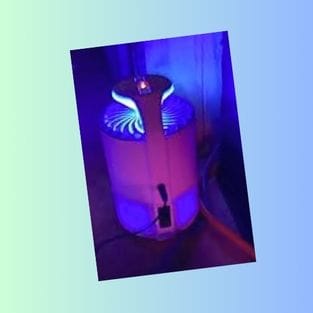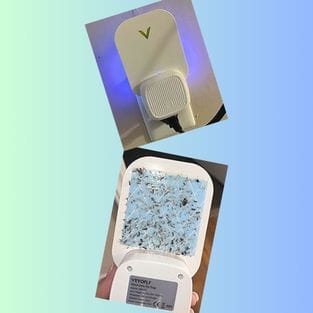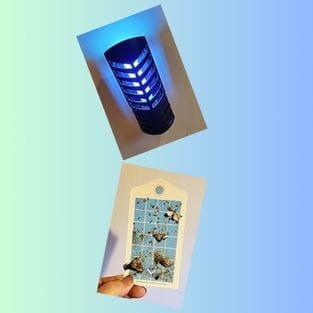Fruit flies and other flying insects can be more than just a nuisance; they can pose health risks and cause significant discomfort in your living spaces.
Fortunately, with the right knowledge and tools, you can effectively combat these pesky invaders.
This comprehensive guide will arm you with everything you need to know about fruit flies and flying insect traps.
Key Takeaways:
- Understand the different types of fruit fly and flying insect traps available.
- Learn how to effectively use and maintain these traps for optimal results.
- Discover natural and DIY solutions alongside commercial products to manage infestations.
Understanding Fruit Flies and Flying Insects
Fruit flies are tiny, pesky insects that are attracted to ripe or fermenting fruits and vegetables.
They can also be drawn to moist, organic materials and can multiply rapidly in your home. Flying insects, such as mosquitoes and houseflies, are not only annoying but can also carry diseases.
Knowing your enemy is the first step in controlling them. These insects have a quick breeding cycle, so it's crucial to act fast once you notice them in your home.
The Science Behind Trapping Flying Insects
Traps for fruit flies and other flying insects are designed based on their behaviors and preferences.
- For instance, fruit flies are attracted to certain colors and scents, which traps often utilize to lure them in.
- Similarly, many flying insects are drawn to light or CO2, which is why some traps emit UV light or mimic human breath.
Understanding the science behind these traps can significantly increase their effectiveness.
Types of Fruit Fly and Insect Traps
There are several types of traps you can use to catch fruit flies and other flying insects.
- Sticky traps, for example, use a glue-like substance to capture insects when they land.

- Electric zappers kill insects upon contact with an electric grid, and

- bait traps lure insects in with an attractive scent or substance.
Each type has its own set of pros and cons, and the best choice will depend on the specific situation and type of insect you're dealing with.
DIY Fruit Fly and Insect Traps
For those who prefer a more hands-on approach, DIY traps can be both effective and satisfying to make.
A simple trap can be created using a jar, some plastic wrap, and a bait such as ripe fruit or vinegar ==> By poking small holes in the plastic wrap, fruit flies can enter the jar but will find it difficult to escape. This method is cost-effective and can be made with items you likely already have at home.
Commercial Fruit Fly and Insect Traps
For those looking for a ready-made solution, there are plenty of commercial traps available on the market.
These traps often come with attractants that are specifically formulated to lure and trap fruit flies and other insects. Some are designed to be discreet, while others are made for larger infestations.

It's important to read reviews and understand how each trap works before making a purchase.
Placement and Maintenance of Traps
The effectiveness of any trap is greatly influenced by its placement.
- Fruit fly traps should be placed near the source of the infestation, such as fruit bowls or garbage cans.
- Flying insect traps, on the other hand, may be more effective near entry points or in dark, damp areas.
*Regular maintenance, such as cleaning or replacing traps, is also crucial to ensure they remain effective over time.
Natural and Eco-Friendly Solutions
For those who prefer to avoid chemicals, there are natural and eco-friendly options available.

Certain plants, like basil and lavender, can repel flying insects, while homemade traps can be made with natural ingredients.
These solutions are not only better for the environment but can also be safer for use around children and pets.
Preventing Future Infestations
Prevention is key when it comes to fruit flies and flying insects.
Proper sanitation, such as cleaning up spills, disposing of overripe produce, and sealing garbage cans, can go a long way in deterring these pests.
Additionally, ensuring that windows and doors are properly sealed can prevent flying insects from entering your home in the first place.
When to Call the Professionals
Sometimes, despite your best efforts, an infestation can become too much to handle on your own.
In these cases, it may be necessary to call in professional pest control services. They can provide more powerful solutions and help identify and eliminate breeding sites that you may have missed.
Innovations in Insect Trapping Technology
The field of insect trapping is constantly evolving, with new technologies and methods being developed to improve efficiency and effectiveness.

From smart traps that can be monitored via smartphone apps to new, non-toxic attractants, staying informed about these innovations can help you stay one step ahead of any infestation.
FAQ Section
Q: What is the most effective type of fruit fly trap?
A: The effectiveness of a fruit fly trap can depend on the specific situation, but bait traps using apple cider vinegar or wine are known to be particularly effective due to their strong attraction to fruit flies.
Q: Can I make my own flying insect trap at home?
A: Yes, you can make your own flying insect trap using common household items such as a jar, plastic wrap, and bait like vinegar or ripe fruit.
There are also many other DIY solutions available that use natural ingredients.
Q: How often should I replace or clean my insect traps?
A: The frequency of maintenance for insect traps varies depending on the type of trap and the level of infestation.
Generally ...
- sticky traps should be replaced when they become full,
- electric zappers should be cleaned regularly to maintain effectiveness,
- and bait traps should be refilled or cleaned according to the manufacturer's instructions or whenever the bait becomes less effective.
Your Takeaway
Fruit flies and flying insects can be a significant problem in any household, but with the right knowledge and tools, they can be effectively managed.
From understanding the behavior of these pests to utilizing various types of traps, natural solutions, and preventative measures, this guide has provided a comprehensive overview of how to keep your home insect-free.
Remember, if the situation becomes unmanageable, don't hesitate to seek professional help.
Disclaimer.
When you purchase through links on our site, we may earn an affiliate commission (that's how we stay in business). FirstFewFinds may use affiliate links to products and services on retailer sites for which we can receive compensation if you click on those links or make purchases through them.
We hope you find the list of our first few finds useful and helpful. Each product on our list has been carefully chosen by our writers and all opinions are our own. Check your choices and enjoy finding exactly what you need!








